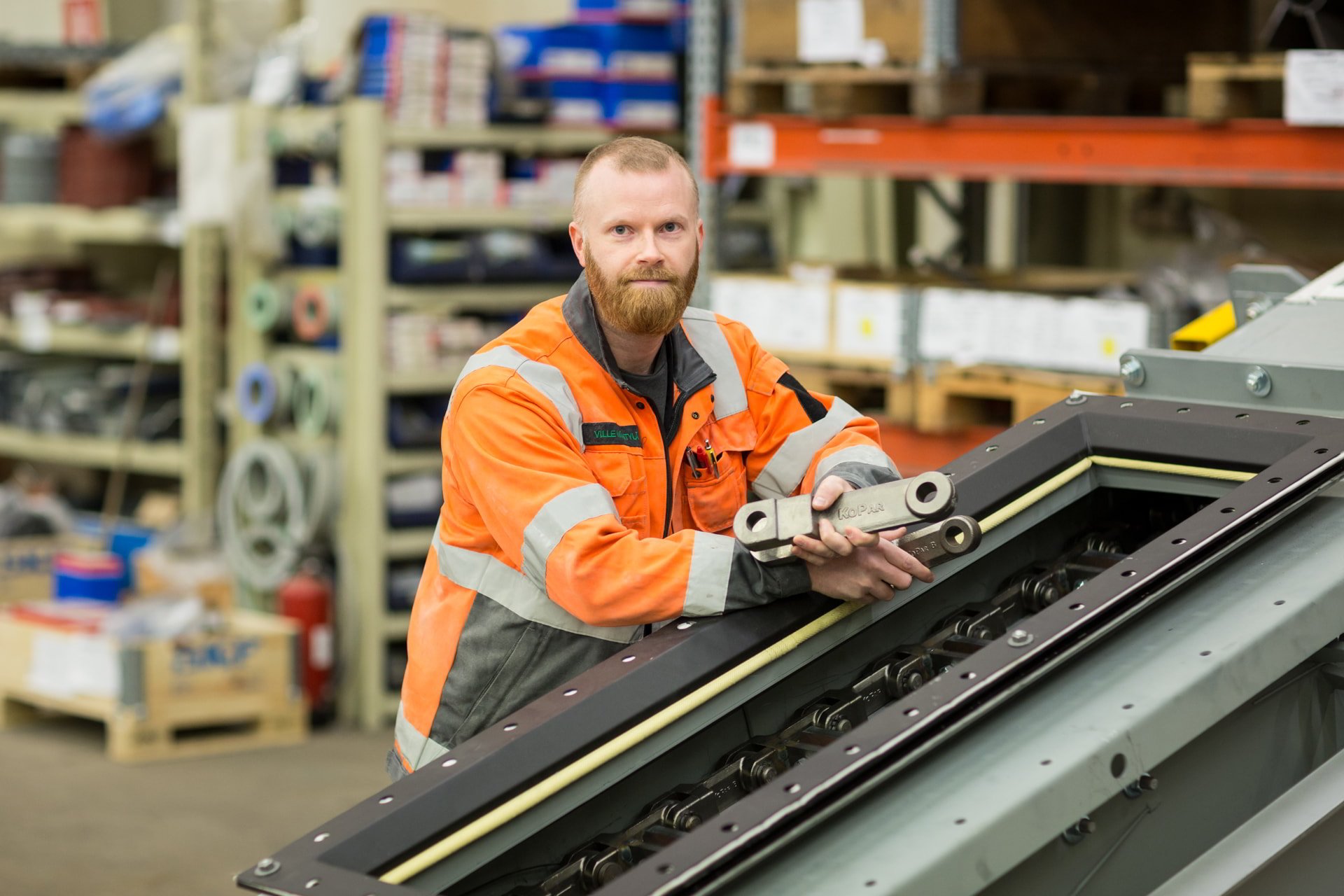Scraper Conveyor and Flight Conveyor
The terms scraper conveyor and flight conveyor are often used to describe similar equipment designed to transport materials such as hot ash. These terms can cause confusion, but in practice, they are synonyms, although there may be slight differences in their usage or structure. A scraper conveyor typically refers to a device where moving scrapers carry material in a closed channel. On the other hand, a flight conveyor uses moving flights or paddles to transport material. Both technologies utilize a closed channel to minimize the spread of dust and splashes, enhancing workplace safety.
The use of these terms as synonyms may stem from the fact that both devices perform the basic function of transporting materials from one place to another. However, there may be subtle differences between these devices; for example, scraper conveyors are more commonly used for horizontal transport, whereas flight conveyors can be more versatile regarding inclination. Nevertheless, both devices are essential components of industrial logistics solutions, especially when it comes to transferring hot ash.
The key is to understand that while there may be variations in terminology, both devices are designed to ensure efficiency and safety in industrial processes. These devices can achieve significant improvements in material handling efficiency while simultaneously reducing environmental impacts.
How Does a Scraper Conveyor Work?
A scraper conveyor operates on a simple yet efficient principle where scrapers attached to a chain move within a closed channel, dragging material along. This structure enables the controlled transfer of hot ash or other bulk materials without significant losses. The key components of a scraper conveyor include the chain, scrapers, motor, and channel, all working together seamlessly to ensure smooth material movement.
The motor is an essential part of the scraper conveyor, providing the kinetic energy needed to propel the chain forward. The scrapers attached to the chain drag the material along, and they can be adjusted to different sizes and shapes depending on the material being conveyed and its intended use. This flexibility makes the scraper conveyor a highly versatile solution for various industrial needs.
The closed channel is designed to prevent the spread of dust and material splashes, making the scraper conveyor a safe and environmentally friendly option. This design also helps maintain workplace cleanliness and reduces exposure to potentially hazardous materials.
Applications of Scraper Conveyors
Scraper conveyors are widely used in industries where the transport of hot ash or other bulk materials is an integral part of the process. One of the primary applications is in power generation, where large amounts of hot ash are produced as a byproduct of combustion processes. Scraper conveyors provide an efficient way to transfer ash to a cooling area or storage site without causing additional environmental burden.
The metal industry is another significant sector where scraper conveyors are used. For instance, in smelters, it is necessary to transport hot slag and other materials safely and efficiently. In this environment, the scraper conveyor's ability to withstand high temperatures and heavy use is crucial.
Additionally, scraper conveyors are utilized in the chemical industry, where process safety and efficiency are paramount. In these environments, the closed design of the scraper conveyor helps prevent chemicals and other harmful substances from entering workspaces, improving working conditions and reducing risks.
Kopar's Role in Conveyor Equipment Development
Kopar has been a significant player in the development of conveyor equipment, particularly scraper and flight conveyors. Innovation and continuous development have been guiding factors in the company's operations, clearly reflected in the performance and durability of their products. Conveyors designed and manufactured by Kopar are engineered to meet the most demanding industrial requirements, providing efficient material handling solutions.
The company has particularly focused on developing solutions that reduce the environmental impact of industrial processes, including improving energy efficiency and extending product lifecycles, which reduces maintenance needs and, consequently, environmental impacts.
The Future Prospects of Scraper Conveyors
The development of scraper conveyors is moving towards even more efficient and environmentally friendly solutions. In the future, innovations are expected that will enhance the automation of transport processes and integration into industrial systems. This could mean smarter control systems that optimize transport processes in real-time, as well as new material technologies that improve conveyor durability.
Environmental friendliness is also a key part of future development. Advanced materials and more energy-efficient motors can reduce the energy consumption of conveyor use, thereby reducing its environmental impact. This aligns with the general trend in the industry towards reducing carbon footprints and improving sustainability.
Finally, the development of scraper conveyors may bring new opportunities for optimizing industrial processes, improving efficiency, and reducing costs. This development is crucial for the industry to meet increasing demands regarding safety, cost-effectiveness, and environmental friendliness.

You have a challenge that needs solving?
Let us help! Contact us for more information about our products and services.
